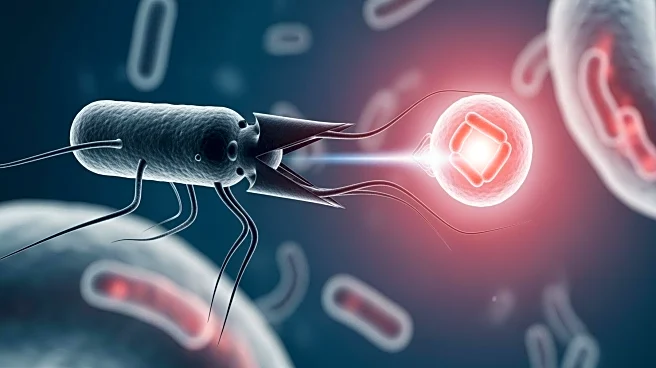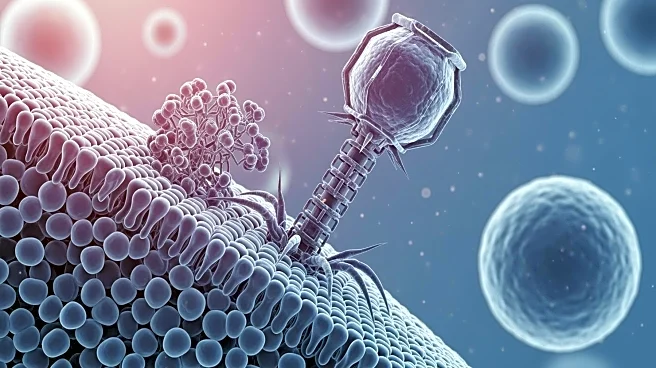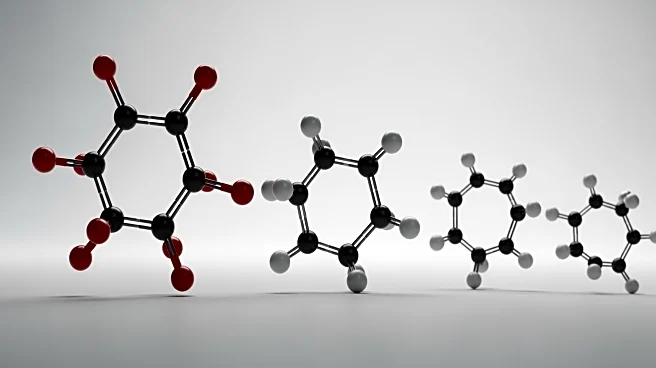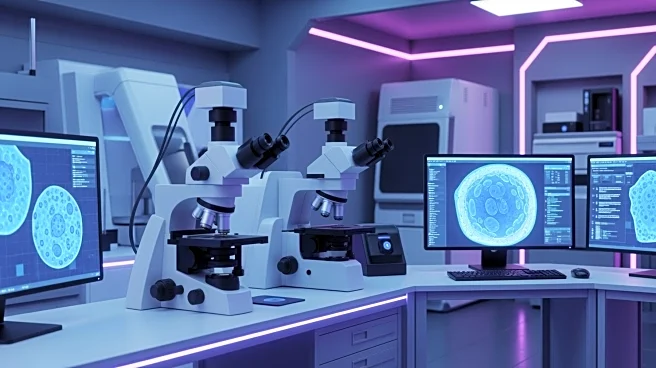What's Happening?
Recent research has identified a novel bacteriophage attachment site within the ffs gene of Enterococcus faecalis, marking a significant discovery in the field of microbiology. The study highlights the integration
of the bacteriophage φEf11 into the ffs gene, which is a component of the signal recognition particle. This integration results in lysogenic conversion, altering the phenotype of the host cell. The ffs gene product, a 4.5S RNA, plays a crucial role in the signal recognition particle, which is responsible for targeting specific cytoplasmic proteins and facilitating their translocation through the plasma membrane. The integration of φEf11 into the ffs gene disrupts this process, potentially affecting the synthesis and assembly of cell wall polymers. This discovery is unique as it is the first experimentally verified instance of a functioning prophage integrating into the ffs gene, which could have implications for understanding bacterial resistance and fitness.
Why It's Important?
The identification of this novel bacteriophage attachment site is significant as it provides insights into the mechanisms of lysogenic conversion and its impact on bacterial phenotype. The integration of φEf11 into the ffs gene alters the function of the signal recognition particle, which could lead to changes in cell surface polymers and affect the bacterium's ability to evade immune responses or resist phage infections. This research could have broader implications for developing therapeutic strategies against multidrug-resistant bacterial strains, particularly Enterococcus faecalis, which is known for its resistance to conventional antibiotics. Understanding the genetic and phenotypic changes induced by prophage integration could lead to new approaches in combating bacterial infections and improving the efficacy of bacteriophage-based treatments.
What's Next?
Further research is needed to explore the full implications of φEf11 integration into the ffs gene and its impact on the phenotype of Enterococcus faecalis. Scientists may investigate the potential for developing countermeasures to reverse the lysogenic conversion and restore sensitivity to bacteriophage endolysins. Additionally, understanding the structural modifications caused by prophage integration could lead to advancements in phage therapy, offering new solutions for treating infections caused by antibiotic-resistant bacteria. The study opens avenues for exploring the role of prophages in bacterial evolution and their potential use in biotechnology and medicine.
Beyond the Headlines
The discovery of the φEf11 attachment site in the ffs gene raises questions about the ethical and practical implications of manipulating bacterial genomes for therapeutic purposes. As researchers delve deeper into the genetic mechanisms of lysogenic conversion, considerations regarding the safety and long-term effects of phage therapy will become increasingly important. The study also highlights the complex interactions between bacteriophages and their host cells, which could lead to a better understanding of microbial ecology and the evolutionary dynamics of bacterial populations.











